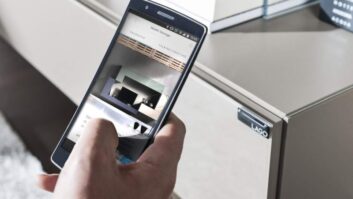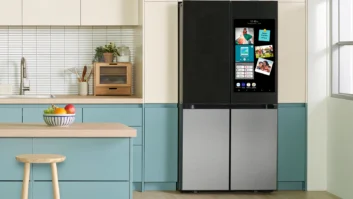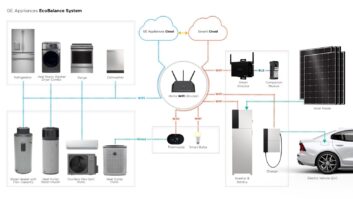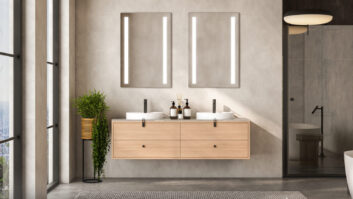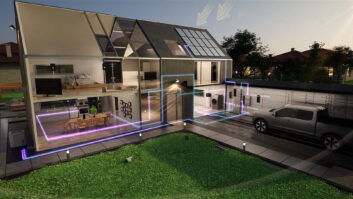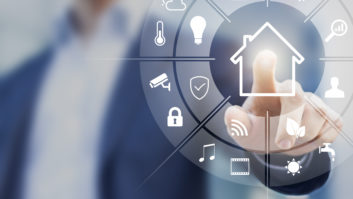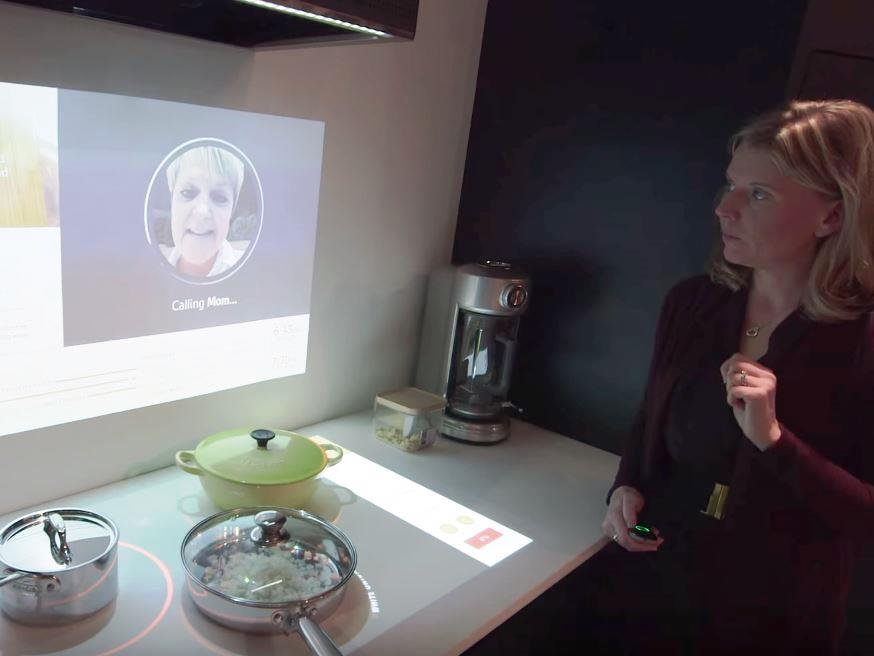
Much has been written – and engineered – around the concept of smart home appliances.
But while manufacturers envision, and have already demonstrated, a Jane Jetson-like future of connected refrigerators that can order more milk when the freshness date expires, there’s a key element missing from the equation: the consumer.
Indeed, majap executives tell TWICE that while the know-how exists to build advanced, interactive whitegoods, consumer demand is trailing the use-case scenarios that their R&D departments have devised, and that mainstream acceptance of smart kitchen and laundry appliances is still a good five years away.
That’s the timetable cited byJohn Herrington, Samsung Electronics America’s home appliance senior VP/general manager. “There’s a lot happening [in smart appliances] as we speak,” he recently told TWICE, citing his company’s $100 million-plus commitment to the Internet of Things (IoT). “We’re putting connectivity in more product, and a majority of products will be IoT-ready in five years.”
John Riddle, LG Electronics USA’s home appliances senior sales VP, also foresees multi-year learning curve for consumers. “I think ‘smart’ as in a connected appliance has tremendous potential, but for now, in most cases their introduction is in flagship products, and we have to continue as an industry to see where the legs are for this and how we can best introduce it to the consumer. I love the idea and the concept; it’s just that right now it’s not at the point of achieving scale.”
The stakes are certainly high. Smart-home analyst Michael Wolf believes the connected kitchen, with its ability to make us healthier, safer and less wasteful, will present a $10.1 billion market opportunity by 2020.
But other observers point to a raft of current roadblocks that include a multitude of connected platforms competing for dominance; a multitude of manufacturers’ apps competing for space on users’ smartphones; and an early false start for the category, in the guise of energy- wise appliances that could connect to local utilities.
That first-generation of “smart” home appliances, from the previous decade, could automatically alter settings and cycles in sync with the peaks and valleys of power-grid demand in order to lower energy consumption and electric bills. But the products required integration with the utilities, and aside from their deployment in a handful of planned communities, the concept proved a dead end and tarnished the category the way 3D TV turned off consumers to subsequent video technologies.
Fast-forward to today, as the terms “smart” and “connected” appliances are becoming associated with white-goods that can be remotely operated via mobile devices. This first wave of app-controlled majaps included cooking products like Dacor’s Discovery iQ dual-fuel series, which most recently added a voice-command feature that allows users to bark out complex cooking instructions to the ranges like “Set timer for one hour,” or “Start bake on the left oven at 200 degrees.”
Lynx Grills is also utilizing speech recogni- tion technology in its new voice-guided SmartGrill, which first asks users a series of questions to determine what they are going to cook, and then responds with step-by-step instructions on how to prepare it.
Jenn-Air, Whirlpool’s premium kitchen sub-brand, has also entered the mobile cooking world with a dual convection wall oven, set to hit retail sales floors this month, which represents its first foray into wireless connectivity and fully-functioning apps for iOS and Android.
At the same time, Whirlpool, the world’s largest majap maker, has also connected with home automation head-on by becoming the first appliance vendor to integrate with connected- home leader Nest Labs. The result: “Works with Nest”-capable top-load and front-load laundry pairs that can keep loads fresh via a post-cycle tumble mode that’s activated when the Nest Learning Thermostat is set to “away.”
Whirlpool, which doesn’t share the high-tech heritage of hybrid CE/majap makers like LG or Samsung Electronics, said it’s setting a deliberate course in its smart appliance evolution, to ensure that product development is dictated by consumer needs rather than engineers’ wants.
Indeed, in a consumer poll conducted last November with Braun Research, the vendor found that consumers are looking for technology that’s “purposeful, rather than impractical.”
Generally, respondents were much less interested in certain “novelty technologies” such as refrigerators that make phone calls or are equipped with LCD screens, the company reported. Rather, they’re interested in “impact” – technology that solves problems and saves time.
“We’re at an exciting intersection in home appliance design,” observed Brett Dibkey, Whirlpool’s integrated business units VP. “Consumers want technology that is both seamless and substantive, and that means applying smart, thoughtful design to our home appliances from the inside out.”
He continued, “Advanced sensor technology and connectivity allows consumers to perform daily tasks like laundry and washing dishes more efficiently. Smart-product design allows them to do so at the touch of a button. It’s really about creating appliances that will allow consumers to get back to doing what matters most – spending time with family and friends.”
To that end, Whirlpool showed at CES 2015 its concept “Interactive Kitchen of the Future 2.0,” which was conceived as a cooking environment and fully-connected social media hub that syncs devices and appliances so everything and everyone that consumers communicate with is within reach using existing surfaces. These include an interactive backsplash and cooktop with personalized touch screens, and a refrigerator that sends an alert notification when food is at its freshest.
The demo envisioned the whole suite of appliances predicting and adjusting needs and actions based on the task. Using information from other devices and connected appliances, the system auto-adapts to any cooking curveballs, such as using ingredients already inventoried in the fridge; accommodating last-minute guests tracked via GPS; and making wine recommendations based on the selected meal, all vividly displayed on the backsplash.
“We take special care to merge our designs with cultural observations,” noted Dibkey. “A lot of people are connecting a lot of ‘things,’ but very few are creating true consumer value. Whirlpool brand’s purposeful use of technology does not get in the way, it points the way.”
Ironically, LG, ostensibly a target of Dibkey’s jab, agrees. “Adoption of smart home appliances has been slow because of the perception that the technology is not easily accessible,” acknowledged Jo Seong-jin, president/CEO of the LG Electronics Home Appliance & Air Solution Co.
In response, the company introduced last week at IFA 2015 in Berlin its SmartThinQ sensor and app. The device, which works on the AllJoyn open platform, can be attached to legacy washers, refrigerators or air conditioners to let users know, via their connected smartphones, when the wash cycle is over or a food item is about to expire, or to allow them to turn on their ACs before they get home.
The sensor, said Jo, “provides real-life benefits and offers new lifestyle conveniences through technology that is easy to use.” While the smart sensor has the makings of a holiday hit, and Whirlpool’s pie-in-the-sky kitchen concept is certainly compelling, the question remains how to convince consumers. Perhaps, suggested LG’s Riddle, with a little help from our friends. “Maybe in an area with new, energy-efficient homes, we should start by working with builders or large builder distributors,” he suggested. “There may also be some opportunities for us with products like the hybrid dryer to work with like-minded utilities that want to drive something that’s going to save energy.” The bottom line: “I think we need help in that area as an industry to get it within arm’s reach of the consumer in a good way,” he said.





